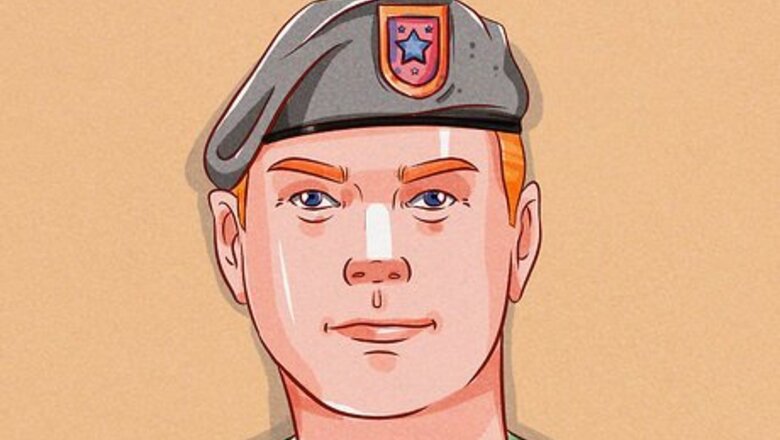
views
Make sure the beret’s headband is straight.
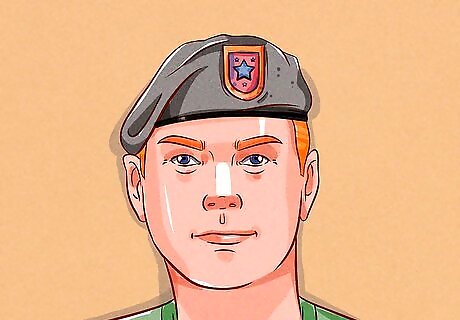
Check that your beret's edge binding forms a horizontal line. Move your beret so that the band is completely straight and rests no more than one inch above your eyebrows. The words "headband" and "edge binding" both refer to the leather trim at the bottom of the beret.
Position the beret's badge over the left eye.
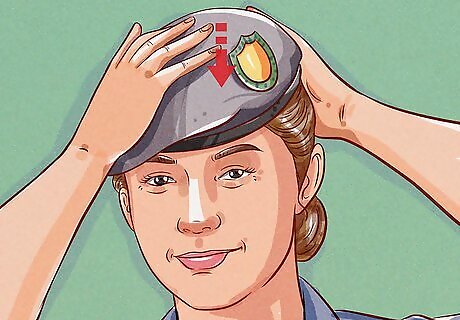
Follow military protocol and show off your troop’s insignia. Orient the flash—a distinctive and colorful badge—toward the left. Then, adjust your beret so the flash is centered over your left eye to bring full attention to it. The insignia on a beret has several meanings. Some denote a specific regiment, such as special forces or paratroopers. Others display the rank of military officers.
Move the beret's excess material to the right.
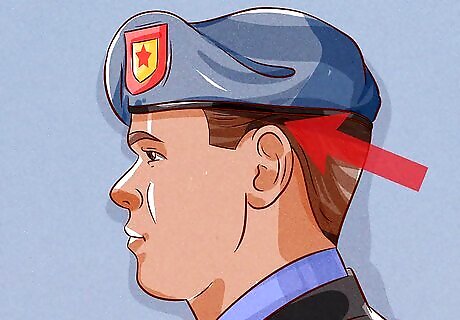
Move any loose fabric so it touches the top of your ear. Gather up the excess fabric and pull it to the right side of the beret. To achieve a neat appearance when you drape the fabric over to the right, smooth it out and create a slight fold. Make sure the material does not fall below the middle of your ear. To fold the excess fabric, you may need to bend the cardboard stiffener beneath it.
Tuck in the leather band of your beret to hide it.
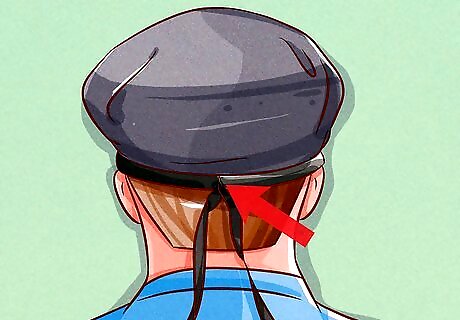
Tie off the leather band into a knot, then slide it into the edge binding. Check the back of your beret and tie the ends of the leather band, which will look like parts of a ribbon, into a non-slip knot. Then, cut off any remaining material that's beneath the knot. Slip the knot into the beret's edge binding to completely conceal it. Turn to the side and look in a mirror to make sure the knot isn't pushed above the edge binding and doesn't create a visible bump.
Use a mirror to fully inspect your beret.
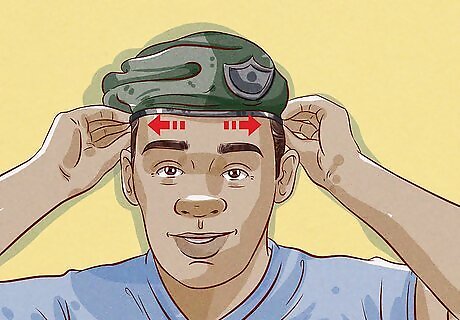
Confirm that the front and the back of your beret meet protocol. See if the edge binding is completely straight across your forehead. Also be sure that the leather band forms a horizontal line at the back of your beret. Check that your beret is snug—it should fit on your head without being too loose or too tight. Look for small details, too. For example, make sure that there aren't any loose threads from the leather band you cut. If you see any wool pills on your beret, gently shave them off with a disposable razor.
Shape your beret with water (if needed).
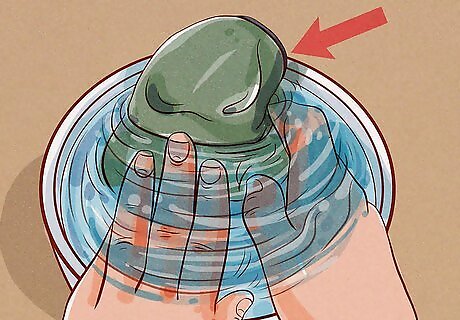
Mold a damp beret if you need to customize its fit. Fill one bowl with warm water and another with cold water. Dip the wool of your beret’s cap into the warm water, then transfer it to the bowl of cold water. Once the beret is wet, place it on your head and adjust it until it fits comfortably. Make sure the cap absorbs as much water as it can from each bowl. This will begin to loosen the fabric of the beret so it’s easier to shape.
Style long hair when wearing a beret.

Tuck or style long hair to meet every standard. If you have bangs, pin them up and obscure them from view. Make sure all hairstyles are tightly secured to your head. To make a military bun, style it so it’s no thicker than 3.5 inches. Like with buns, braided hair should not extend below the back of the collar. Dreadlocks are now allowed to be worn in uniform. Each dreadlock must be no wider than 1/8 inch (0.32 cm) and must be able to fit into a bun no thicker than 3.5 inches (8.89 cm). Free-hanging styles, such as loose ponytails, are not permitted. Any items securing your hair should be as close to your natural hair color as possible. Decorative pins, hair ties or clips are not allowed.
















Comments
0 comment